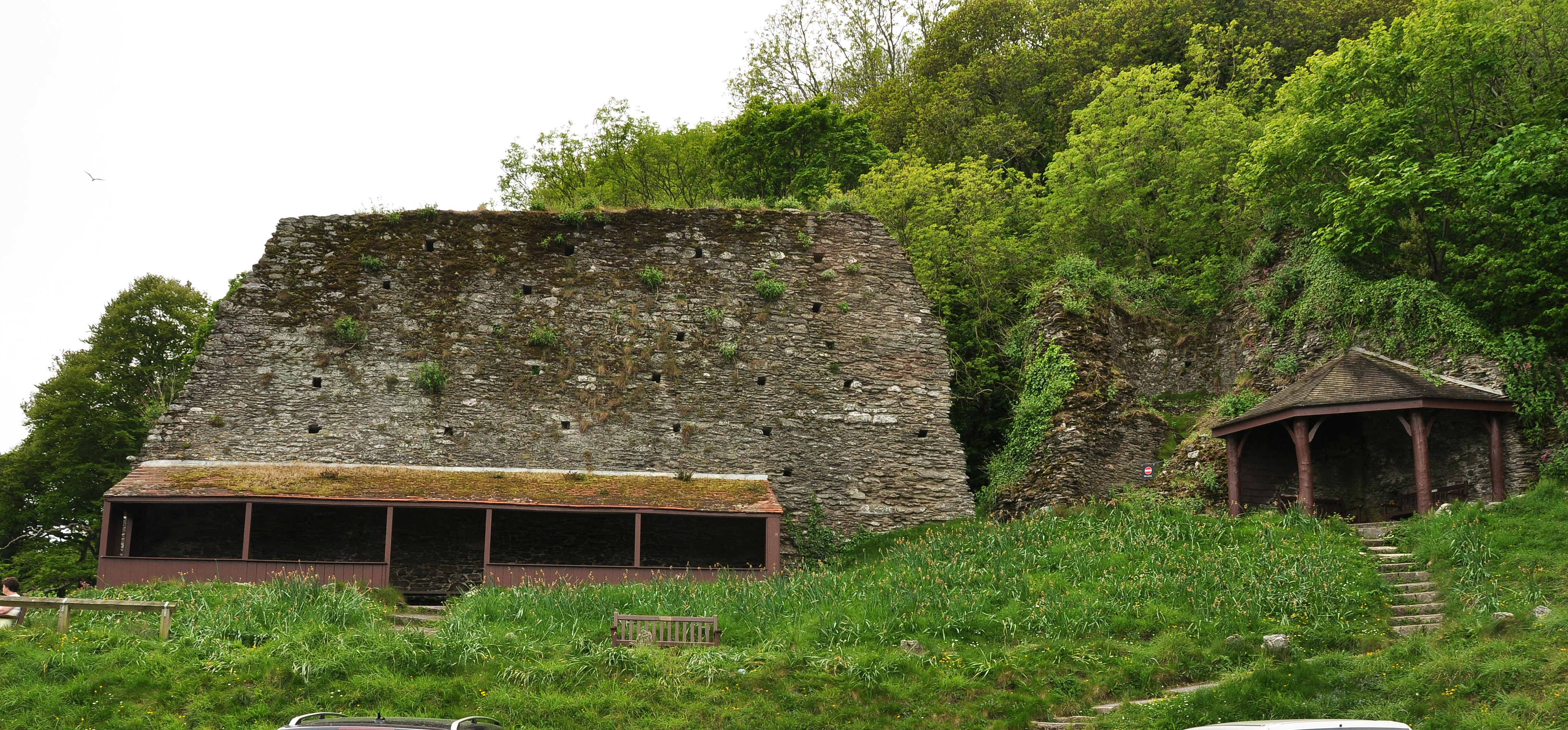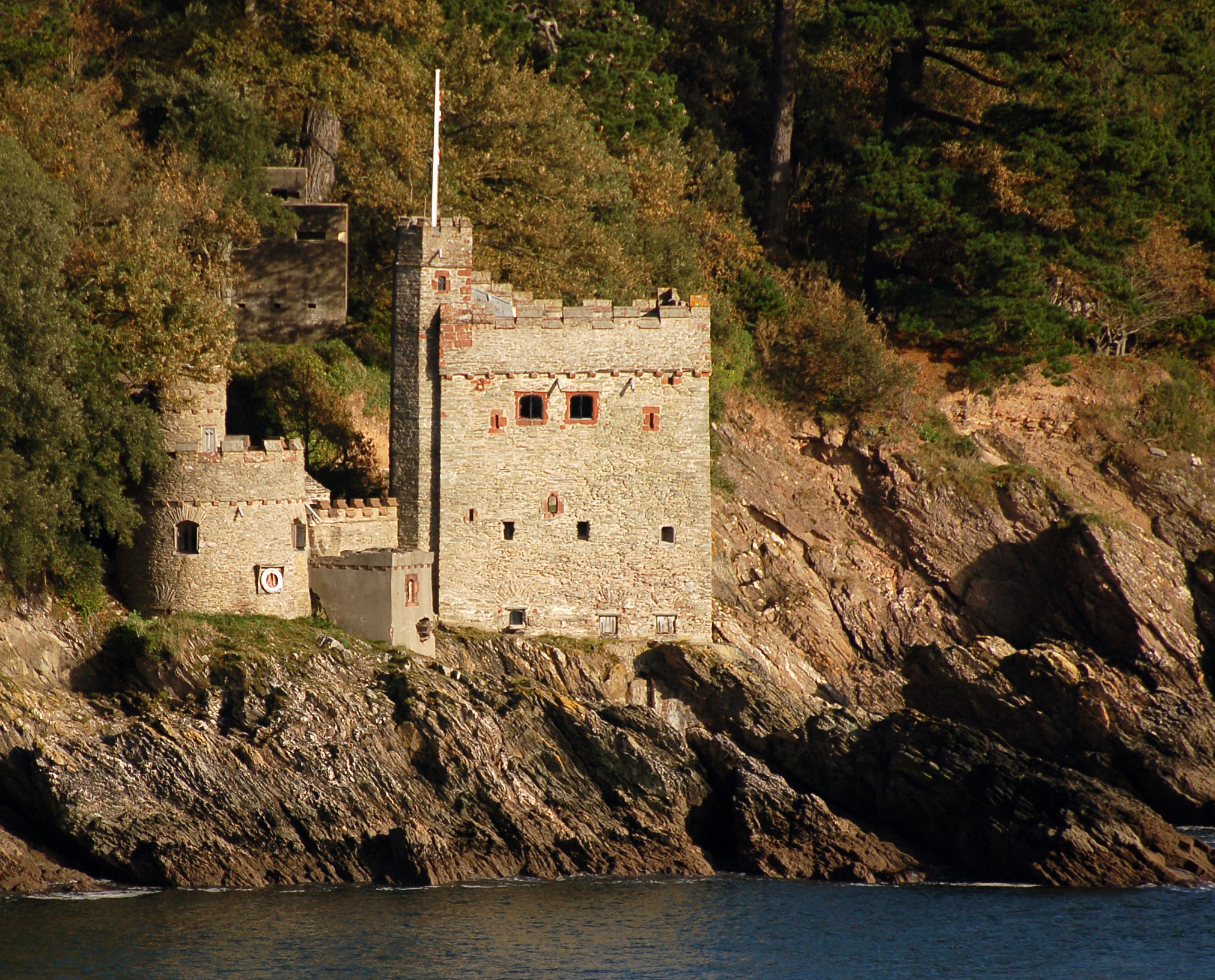|
Dartmouth Harbour
Dartmouth Harbour (also Dart Harbour) is a natural port located in Dartmouth, Devon, England. It is situated at the mouth of the River Dart on the English Channel. Bayard's Cove Fort is a small fort, which was built to defend the harbour's entrance. The crafts which dock at the port are mainly local fishing vessels, naval ships and luxury yachts; warships routinely visit the harbour. The River Dart is navigable from Dartmouth to the old weir location at Totnes. Geography The harbour is located at the mouth of the River Dart (the name 'Dart' is Brythonic Celtic meaning 'river where oak trees grow'), which rises high on Dartmoor, and enters the sea at Dartmouth. The river begins as two separate branches (the East Dart and West Dart), which join at Dartmeet. The rivers are crossed by a number of clapper bridges, notably at the hamlet of Postbridge. At Totnes a weir (of the 17th century vintage rebuilt in the 1960s) has been constructed across the river. The river reach between ... [...More Info...] [...Related Items...] OR: [Wikipedia] [Google] [Baidu] |
Devon
Devon ( , historically known as Devonshire , ) is a ceremonial and non-metropolitan county in South West England. The most populous settlement in Devon is the city of Plymouth, followed by Devon's county town, the city of Exeter. Devon is a coastal county with cliffs and sandy beaches. Home to the largest open space in southern England, Dartmoor (), the county is predominately rural and has a relatively low population density for an English county. The county is bordered by Somerset to the north east, Dorset to the east, and Cornwall to the west. The county is split into the non-metropolitan districts of East Devon, Mid Devon, North Devon, South Hams, Teignbridge, Torridge, West Devon, Exeter, and the unitary authority areas of Plymouth, and Torbay. Combined as a ceremonial county, Devon's area is and its population is about 1.2 million. Devon derives its name from Dumnonia (the shift from ''m'' to ''v'' is a typical Celtic consonant shift). During the Briti ... [...More Info...] [...Related Items...] OR: [Wikipedia] [Google] [Baidu] |
Postbridge, Devon
Postbridge is a hamlet in the heart of Dartmoor in the English county of Devon. It lies on the B3212, roughly midway between Princetown and Moretonhampstead. Postbridge is next to the East Dart river, one of two main tributaries of the River Dart, and consists of a few houses, a shop, a pub and hotel, and a national park tourist information centre. Postbridge is best known for its fine example of an ancient clapper bridge over the river. First recorded in the 14th century, the bridge is believed to have been built in the 13th century to enable pack horses to cross the river, carrying tin to the stannary town of Tavistock. The clapper bridge, a Grade II*-listed structure, is still complete, and stands alongside another bridge, a Grade II-listed structure built in the 1780s. The settlement is also infamous for the ghost story of the Hairy Hands The Hairy Hands is a ghost story/legend that built up around a stretch of road on a remote area of Dartmoor in the English county ... [...More Info...] [...Related Items...] OR: [Wikipedia] [Google] [Baidu] |
UK Hydrographic Office
The United Kingdom Hydrographic Office (UKHO) is the UK's agency for providing hydrographic and marine geospatial data to mariners and maritime organisations across the world. The UKHO is a trading fund of the Ministry of Defence (MoD) and is located in Taunton, Somerset, with a workforce of approximately 900 staff. The UKHO is responsible for operational support to the Royal Navy and other defence customers. Supplying defence and the commercial shipping industry, they help ensure Safety of Life at Sea (SOLAS), protect the marine environment and support the efficiency of global trade. Together with other national hydrographic offices and the International Hydrographic Organization (IHO), the UKHO works to set and raise global standards of hydrography, cartography and navigation. The UKHO also produces a commercial portfolio of ADMIRALTY Maritime Data Solutions, providing SOLAS-compliant charts, publications and digital services for ships trading internationally. History Es ... [...More Info...] [...Related Items...] OR: [Wikipedia] [Google] [Baidu] |
Tide
Tides are the rise and fall of sea levels caused by the combined effects of the gravity, gravitational forces exerted by the Moon (and to a much lesser extent, the Sun) and are also caused by the Earth and Moon orbiting one another. Tide tables can be used for any given locale to find the predicted times and amplitude (or "tidal range"). The predictions are influenced by many factors including the alignment of the Sun and Moon, the #Phase and amplitude, phase and amplitude of the tide (pattern of tides in the deep ocean), the amphidromic systems of the oceans, and the shape of the coastline and near-shore bathymetry (see ''#Timing, Timing''). They are however only predictions, the actual time and height of the tide is affected by wind and atmospheric pressure. Many shorelines experience semi-diurnal tides—two nearly equal high and low tides each day. Other locations have a diurnal cycle, diurnal tide—one high and low tide each day. A "mixed tide"—two uneven magnitude ... [...More Info...] [...Related Items...] OR: [Wikipedia] [Google] [Baidu] |
Sand Quay, Dartmouth
Sand is a granular material composed of finely divided mineral particles. Sand has various compositions but is defined by its grain size. Sand grains are smaller than gravel and coarser than silt. Sand can also refer to a textural class of soil or soil type; i.e., a soil containing more than 85 percent sand-sized particles by mass. The composition of sand varies, depending on the local rock sources and conditions, but the most common constituent of sand in inland continental settings and non-tropical coastal settings is silica (silicon dioxide, or SiO2), usually in the form of quartz. Calcium carbonate is the second most common type of sand, for example, aragonite, which has mostly been created, over the past 500million years, by various forms of life, like coral and shellfish. For example, it is the primary form of sand apparent in areas where reefs have dominated the ecosystem for millions of years like the Caribbean. Somewhat more rarely, sand may be composed of calc ... [...More Info...] [...Related Items...] OR: [Wikipedia] [Google] [Baidu] |
Brownstone Battery, Foundation Overlooking Mew Stone - Geograph
Brownstone is a brown Triassic–Jurassic sandstone that was historically a popular building material. The term is also used in the United States and Canada to refer to a townhouse clad in this or any other aesthetically similar material. Types Apostle Island brownstone In the 19th century, Basswood Island, Wisconsin was the site of a quarry run by the Bass Island Brownstone Company which operated from 1868 into the 1890s. The brownstone from this and other quarries in the Apostle Islands was in great demand, with brownstone from Basswood Island being used in the construction of the first Milwaukee County Courthouse in the 1860s. Hummelstown brownstone Hummelstown brownstone is extremely popular along the East Coast of the United States, with numerous government buildings throughout West Virginia, Pennsylvania, New York, Maryland, and Delaware being faced entirely with the stone, which comes from the Hummelstown Quarry in Hummelstown, Pennsylvania, a small town outside of ... [...More Info...] [...Related Items...] OR: [Wikipedia] [Google] [Baidu] |
Stoke Fleming Church
Stoke is a common place name in the United Kingdom. Stoke may refer to: Places United Kingdom The largest city called Stoke is Stoke-on-Trent in Staffordshire. See below. Berkshire * Stoke Row, Berkshire Bristol * Stoke Bishop * Stoke Gifford * Bradley Stoke * Little Stoke * Harry Stoke * Stoke Lodge Buckinghamshire * Stoke Hammond * Stoke Mandeville * Stoke Poges Cheshire * Stoke, Cheshire East * Stoke, Cheshire West and Chester, a civil parish Cornwall * Stoke Climsland Devon * Stoke, Plymouth * Stoke, Torridge, in Hartland parish * Stoke Canon * Stoke Fleming * Stoke Gabriel * Stoke Rivers Dorset * Stoke Abbott * Stoke Wake Gloucestershire * Stoke Orchard Hampshire * Stoke, Basingstoke and Deane * Stoke, Hayling Island * Stoke Charity * Basingstoke, Basingstoke and Deane * Alverstoke, Gosport Herefordshire * Stoke Bliss * Stoke Edith * Stoke Lacy * Stoke Prior Kent * Stoke, Kent Leicestershire * Stoke Golding Lincolnshire ... [...More Info...] [...Related Items...] OR: [Wikipedia] [Google] [Baidu] |
Carn
''Carn'' is the official magazine of the Celtic League. The name, a Celtic word which has been borrowed into English as ' cairn', was chosen for its symbolic value and because it can be found in each of the living Celtic languages. The subtitle is: 'A Link Between the Celtic Nations'. Overview Founded in 1973, ''Carn'' is dedicated to highlighting and furthering the aims of the Celtic League, including language preservation and self-determination for the Six Celtic Nations. The articles are published in English, with articles also in the six Celtic languages: Breton, Cornish, Irish, Manx, Scottish Gaelic, and Welsh, with translations and summaries in English. In the past, articles have also appeared in French. Notable contributors have included the Scottish Gaelic poet Sorley MacLean. The cover of the magazine for a number of years has been a map showing the various Celtic countries, notated with their names in their respective native languages. Editors The edit ... [...More Info...] [...Related Items...] OR: [Wikipedia] [Google] [Baidu] |
Granite
Granite () is a coarse-grained (phaneritic) intrusive igneous rock composed mostly of quartz, alkali feldspar, and plagioclase. It forms from magma with a high content of silica and alkali metal oxides that slowly cools and solidifies underground. It is common in the continental crust of Earth, where it is found in igneous intrusions. These range in size from dikes only a few centimeters across to batholiths exposed over hundreds of square kilometers. Granite is typical of a larger family of ''granitic rocks'', or ''granitoids'', that are composed mostly of coarse-grained quartz and feldspars in varying proportions. These rocks are classified by the relative percentages of quartz, alkali feldspar, and plagioclase (the QAPF classification), with true granite representing granitic rocks rich in quartz and alkali feldspar. Most granitic rocks also contain mica or amphibole minerals, though a few (known as leucogranites) contain almost no dark minerals. Granite is nearly alway ... [...More Info...] [...Related Items...] OR: [Wikipedia] [Google] [Baidu] |
Promontory
A promontory is a raised mass of land that projects into a lowland or a body of water (in which case it is a peninsula). Most promontories either are formed from a hard ridge of rock that has resisted the erosive forces that have removed the softer rock to the sides of it, or are the high ground that remains between two river valleys where they form a confluence. A headland, or head, is a type of promontory. Promontories in history Located at the edge of a landmass, promontories offer a natural defense against enemies, as they are often surrounded by water and difficult to access. Many ancient and modern forts and castles have been built on promontories for this reason. One of the most famous examples of promontory forts is the Citadel of Namur in Belgium. Located at the confluence of the Meuse and Sambre rivers, the citadel has been a prime fortified location since the 10th century. The surrounding rivers act as a natural moat, making it difficult for enemies to access th ... [...More Info...] [...Related Items...] OR: [Wikipedia] [Google] [Baidu] |
Dartmouth Castle
Dartmouth Castle is an artillery fort, built to protect Dartmouth harbour in Devon, England. The earliest parts of the castle date from the 1380s, when, in response to the threat of a French attack, the civic authorities created a small enclosure castle overlooking the mouth of the Dart estuary. This was intended to engage enemy ships with catapults and possibly early cannon, and incorporated the local chapel of Saint Petroc within its walls. At the end of the 15th century, the castle was expanded with an artillery tower and an iron chain which could be stretched across the harbour to a tower at Godmerock; this addition formed the oldest known purpose-built coast artillery fort in Britain. Further gun batteries were added during the French invasion scare of the 1540s. The castle saw service during the English Civil War of 1642 to 1646, during which its vulnerability to attack from the land became apparent, resulting in the Gallants Bower defensive work above it being used to ... [...More Info...] [...Related Items...] OR: [Wikipedia] [Google] [Baidu] |
Kingswear Castle
Kingswear Castle is an artillery fort, built to protect Dartmouth, Devon, Dartmouth harbour in Devon, England. It was constructed between 1491 and 1502 in response to the threat of French attack and was one of the first purpose-built artillery forts in Britain. By the end of the 16th century, however, improvements in the range of artillery weapons had reduced the utility of the castle. It took part in the English Civil War and continued to be armed until the early 18th century, but fell into ruin. Restored as a summer house in 1855, in the 21st century it is managed by the Landmark Trust as a holiday let. History 15th–16th centuries Kingswear Castle was built to protect the coastal town of Dartmouth, Devon, Dartmouth in Devon. In the medieval period, the town's harbour, located in the estuary of the River Dart, was an important trading and fishing port, able to hold up to 600 vessels. Fears of a French invasion, combined with the hope of retaining a valuable royal subsidy, le ... [...More Info...] [...Related Items...] OR: [Wikipedia] [Google] [Baidu] |








